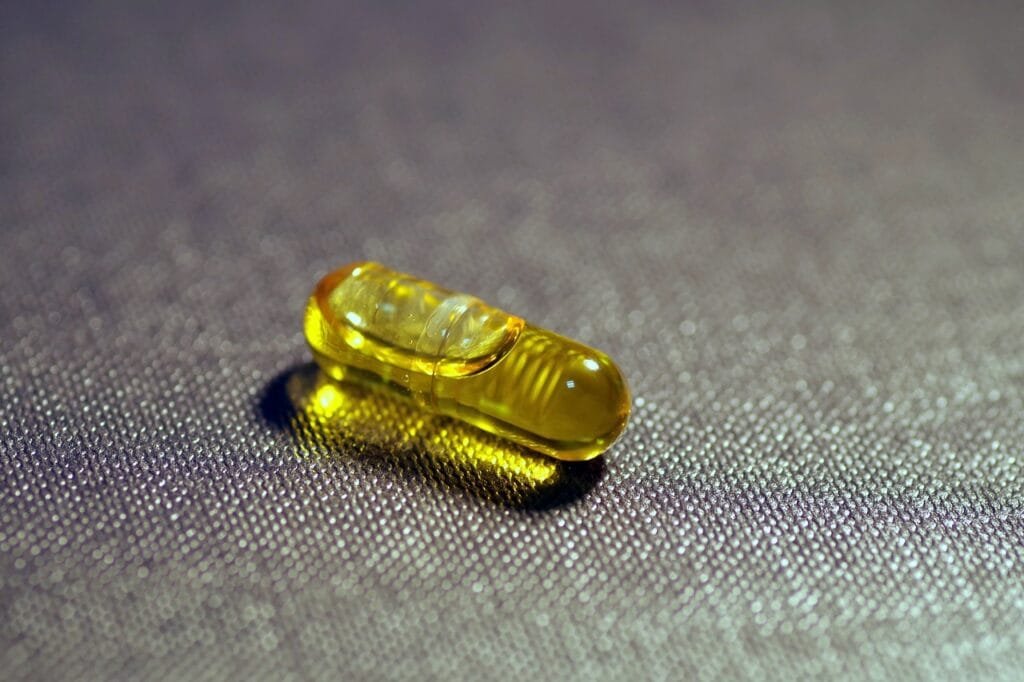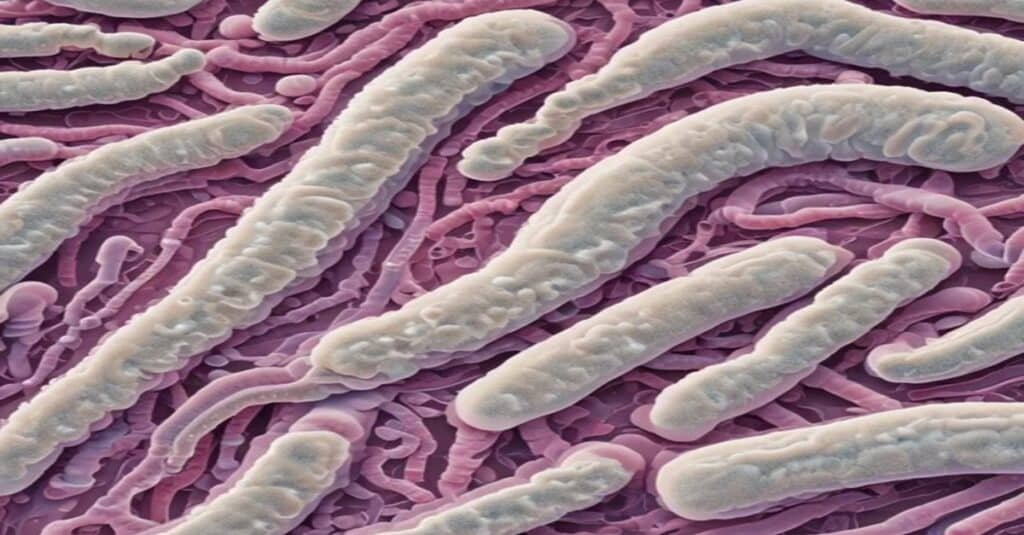Streptococcus thermophilus: a classic probiotic still in the groove
Nowadays, it is recognized that some bacteria benefit the human body. However, when these microorganisms were discovered under the microscope, human disease’s weight was focused on them as pathogenic agents. It wasn’t until 1907 that Élie Metchnikoff mentioned for the first time the hypothesis that not all microbes are harmful. And right after giving this statement in a classic paper, he mentioned lactic bacilli as an example of good bacteria (1).
Many years later, the word probiotic was designated to these helpful bacteria that contribute to intestinal microbial balance. When probiotics caught the attention of investigators, and they started to produce research in full, they found that some strains of Streptococcus can also be beneficial. Contrary to entities such as Streptococcus pyogenes and Streptococcus pneumoniae, the variant of Streptococcus thermophilus is harmless to the human body. This strain, with its historical significance and evolution, has become a metabolic specialist for living in milk products and has been used for many years as a yogurt starter.
Since 2015, there has been a long list of criteria probiotic products should fulfill to obtain marketing authorization as probiotic bacteria. European health policy has become strict, especially since probiotics have become trendy lately. However, Streptococcus thermophilus not only gets the clearance as a safe probiotic supplement but also leads the way and gives an example of what to expect of good bacteria in the human body.
This blog will review the essential facts about Streptococcus thermophilus, what everyone should know about this strain, and the health benefits consumers will likely get after adopting this bacteria in their regular treatment.

What everyone should know about Streptococcus thermophilus
Like other streptococcus strains, S. thermophilus is a gram-positive bacterium with an ovoid shape. This bacterium is commonly seen under the microscope in pairs or short chains. It has the smallest genome compared with other members of the Streptococcus family and other lactic acid bacteria. According to studies, this strain diverged from the line of their pathogenic counterparts around 7000 years ago. That’s why this species does not have the genes for virulence and toxicity shared by other strains, such as Streptococcus pyogenes and Streptococcus pneumoniae. Instead, it has become a metabolic specialist for living in milk products and has been used for many years as a yogurt starter (2).
Streptococcus thermophilus is the only species of Streptococcus the food industry uses and has been around for centuries without any trace of disease. Thus, it was granted the label “Generally Recognized As Safe” by the Food and Drug Administration almost immediately without hesitation. This long-standing use and safety record should reassure consumers about the benefits of Streptococcus thermophilus.
Studies about Streptococcus thermophilus show this strain can survive the stomach’s acidic environment pretty well. Research shows that only a small proportion of cells die; most survive the stomach and reach the small intestine. After reaching the gut, studies show that feces increase their concentration of Streptococcus thermophilus almost immediately after starting the supplement. This immediate benefit should make consumers eager to try Streptococcus thermophilus.
Benefits and applications of Streptococcus thermophilus
Since Streptococcus thermophilus was first studied in humans, researchers have discovered a wide range of applications and health effects. In the following sections, we will describe the most important health benefits, one by one, including its role in alleviating lactose intolerance, protecting the stomach and preventing chronic gastritis, and its effectiveness in preventing rotavirus and antibiotic-associated diarrhea.
Since we already know it is a Streptococcus, we will refer to this strain as S. thermophilus to make reading easier.
S. thermophilus can alleviate lactose intolerance and improve digestion
Lactose intolerance refers to the inability to digest milk sugar, which is known as lactose. It happens because the body doesn’t have an enzyme called beta-galactosidase, which would hydrolyze lactose into glucose and galactose. In its absence, lactose stays untouched in the gut and causes abdominal pain, flatulence, and diarrhea. Everyone experiences lactose intolerance differently, and symptoms are sometimes very severe. However, similar to lactobacilli, S. termophilus can improve lactose digestion.
Many human studies show that consuming fresh yogurt with sufficient S. thermophilus can enhance lactose digestion in patients with severe lactose intolerance. However, the effect is apparently much better when S. thermophilus is combined with Lactobacillus bulgaricus. The effectiveness of this combination of lactic acid bacteria was enough for the EFSA to grant a health claim to yogurt for improvements in lactose digestion (6).
S. thermophilus protects the stomach and may prevent chronic gastritis
Gastritis is an inflammatory condition of the stomach, and there are many causes. One is the extensive use of acetylsalicylic acid and other NSAIDs. When sustained for a long time, this inflammation can damage the stomach wall and cause ulcers. Drugs such as omeprazole can inhibit ulcer formation in patients with chronic gastritis, but they have undesirable side effects that restrict their use.
Studies have shown that administering a daily dose of milk fermented by S. thermophilus can have a gastroprotective effect similar to omeprazole. This effect is linked to substances known as EPS or exopolysaccharides, which are produced by S. thermophilus and stimulate the immune system while inhibiting ulcer formation (7, 8).
S. thermophilus prevents rotavirus and antibiotic-associated diarrhea
Probiotics are popular in the field of diarrhea prevention, especially after using antibiotics. These drugs are meant to destroy pathogen bacteria, but they also sweep good bacteria in the gut. With prolonged use, antibiotics can cause intestinal dysbiosis, a lack of gut microbiota that leaves the intestinal lining ready to be colonized by pathogens. Another form of diarrhea is rotavirus, which usually affects infants and has a high mortality rate. It is a viral infection that affects gut metabolism and causes watery stools.
In the field of antibiotic-associated diarrhea, S. thermophilus colonizes the intestinal mucosa and has an antimicrobial effect against pathogenic bacteria. The strain synthesizes thermophilins, a bacteriocin that inhibits growth and sometimes kills pathogenic strains such as Enterococcus faecalis, Clostridium botulinum, and Staphylococcus aureus (9). The bacteria also stimulates the immune system and helps the body against rotavirus infection. In studies, infants aged 5 to 24 months reduced the incidence of rotavirus infections from 31% to 7% after receiving a formula combining S. thermophilus and B. bifidum (10).
S. thermophilus can stimulate the skin’s barrier function
Interestingly, probiotics can stimulate cells and organs in the body, even if they are distant from the gut. One example is the skin and how S. thermophilus can stimulate ceramide production. This is a skin protective agent that creates a barrier in keratinocytes to protect the body against ultraviolet rays, heat, and various pathogens.
Studies show that S. thermophilus can stimulate the body to produce more ceramide and increase keratinocyte levels. The research was mainly performed in vitro, but there are also in vivo studies showing an increasing level of ceramides in the stratum corneum. Ceramides may serve as a barrier against infection, dehydration, and chemical damage (11).
S. thermophilus protects the body against free radicals
Free radicals are unstable substances that stabilize by stealing hydrogen atoms from the environment. In the process, they break molecular chains, damage structures, and may even cause mutations in DNA. Antioxidants can neutralize free radicals and prevent them from damaging cells. But when antioxidants are not enough, probiotics can sometimes fight free radicals. Studies have shown that S. thermophilus has this function.
When vitamin E and other antioxidants are deficient, S. thermophilus can trap reactive oxygen forms and neutralize their effects in the body. Studies also show this strain inhibits lipid peroxidation when administered in yogurt enriched with L. bulgaricus.
Conclusion and takeout
Streptococcus thermophilus is a beneficial bacteria commonly used to ferment milk and produce yogurt. It is also used in the food industry to make some types of cheese. As a supplement, S. thermophilus has the essential health benefits shared by other probiotics, plus a few extra. It is known to prevent diarrhea triggered by rotavirus and prolonged antibiotic use. It is beneficial for gut health and improves the function of the barrier against some types of gastrointestinal pathogens. It also has enzymes that break down lactose.
Besides its basic function in gut health, S. thermophilus can also protect the gastric mucosa. It works similarly to omeprazole but without side effects and shields the stomach against aspirin-associated ulcer formation. The probiotic also works on distant organs, such as the skin, producing more ceramide to increase its shielding effects against UV rays. It also has antioxidant effects when endogenous and exogenous antioxidants are insufficient to keep free radicals at bay.
However, some functions of S. thermophilus work even better when combined with other probiotics. For instance, the antioxidant effects protect lipids against peroxidation when combined with L. bulgaricus. It protects children against rotavirus infections when combined with B. bifidum. It has a better effect on lactose intolerance when administered with L. bulgaricus. It is also important to remember that you need to keep consuming S. thermophilus for the impact to remain in your system. Otherwise, the effects might wear off after one or two weeks.
References:
- Metchnikoff, E. (1907). The prolongation of life. The prolongation of life. Optimistic Studies, pp., 161-183.
- Hols, P., Hancy, F., Fontaine, L., Grossiord, B., Prozzi, D., Leblond-Bourget, N., … & Kleerebezem, M. (2005). New insights in the molecular biology and physiology of Streptococcus thermophilus revealed by comparative genomics. FEMS microbiology reviews, 29(3), 435-463.
- Iyer, R., Tomar, S. K., Maheswari, T. U., & Singh, R. (2010). Streptococcus thermophilus strains: Multifunctional lactic acid bacteria. International Dairy Journal, 20(3), 133-141.
- García‐Hernández, J., Moreno, Y., Chuan, C., & Hernández, M. (2012). In Vivo Study of the Survival of Lactobacillus delbruecki subsp. bulgaricus CECT 4005T and Streptococcus thermophilus CECT 801 by DVC‐FISH after Consumption of Fermented Milk. Journal of food science, 77(10), M593-M597.
- Venturi, Gionchetti, Rizzello, Johansson, Zucconi, Brigidi, … & Campieri. (1999). Impact on the composition of the faecal flora by a new probiotic preparation: preliminary data on maintenance treatment of patients with ulcerative colitis. Alimentary pharmacology & therapeutics, 13(8), 1103-1108.
- EFSA Panel on Dietetic Products, Nutrition and Allergies (NDA). (2010). Scientific Opinion on the substantiation of health claims related to live yoghurt cultures and improved lactose digestion (ID 1143, 2976) pursuant to Article 13 (1) of Regulation (EC) No 1924/2006. EFSA Journal, 8(10), 1763.
- Rodríguez, C., Medici, M., Rodriguez, A. V., Mozzi, F., & de Valdez, G. F. (2009). Prevention of chronic gastritis by fermented milks made with exopolysaccharide-producing Streptococcus thermophilus strains. Journal of dairy science, 92(6), 2423-2434.
- Rodríguez, C., Medici, M., Mozzi, F., & de Valdez, G. F. (2010). Therapeutic effect of Streptococcus thermophilus CRL 1190-fermented milk on chronic gastritis. World journal of gastroenterology: WJG, 16(13), 1622.
- Rossi, F., Marzotto, M., Cremonese, S., Rizzotti, L., & Torriani, S. (2013). Diversity of Streptococcus thermophilus in bacteriocin production; inhibitory spectrum and occurrence of thermophilin genes. Food microbiology, 35(1), 27-33.
- Saavedra, J. M., Bauman, N. A., Perman, J. A., Yolken, R. H., & Oung, I. (1994). Feeding of Bifidobacterium bifidum and Streptococcus thermophilus to infants in hospital for prevention of diarrhoea and shedding of rotavirus. The lancet, 344(8929), 1046-1049.
See the YouTube Video below.
Read Other Education articles here.





Pingback: 5 EASY TIPS To Quit Drinking Alcohol ONCE AND FOR ALL
Pingback: The Mesmerizing Benefits of Castor Oil - Health Chronicle
Pingback: Traditional Chinese Medicine: Ancient Wisdom, Modern Health
Pingback: How Stress Affects Your Body: Migraines to Heart Risk
Pingback: 6 Ways Anger Impacts Your Health & Hidden Risks
Pingback: Chronic Inflammation: The Hidden Threat to Your Health
Pingback: Dietary Approaches for Weight Loss: Keto & Paleo
Pingback: Nutrition Myths Busted: Separating Fact from Fiction
Pingback: Home Workouts: Stay Fit Without a Gym, Even When Busy
Pingback: Quick 10-Minute Workout for Busy Professionals
Pingback: Best Pre & Post-Workout Meals for Peak Performance
Pingback: Top 5 Home Workout Equipment You Need to Stay Fit - Health Chronicle
Pingback: Balanced Routine: Mix Exercise, Sleep & Nutrition
Pingback: Bird Flu Outbreak: Key Facts You Need to Know
Pingback: Saccharomyces Boulardii: A Powerful Probiotic
Pingback: Burn It to Earn It: Calorie Burn Calculator - Health Chronicle